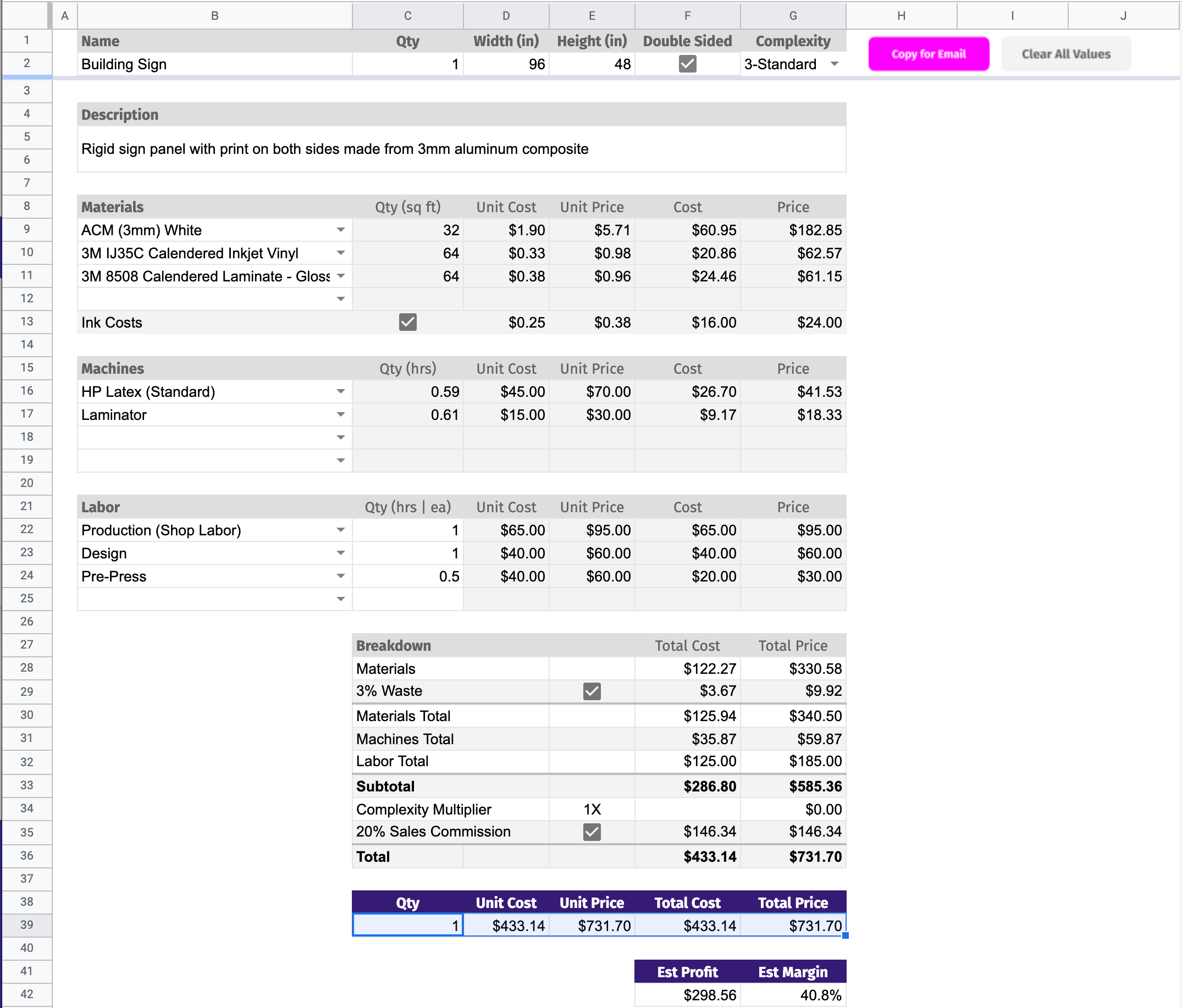1) Remember the goal of your website
Just as people will stumble when we try to do too much, so will your website. It’s easy to believe that the more information and stuff we throw on our website the better we’ll do. And it’s never been easier to add e-commerce, online design, social media feeds, and tons of other “cool” stuff to your site.
But it’s more important to look at why your website exists and what purpose it serves.
For most shops, the sole “purpose” of your website should be to optimize your website for these two items.
getting contact details from leads looking for information
getting an email address from visitors not ready for a quote
I’m all for making it easier for your customer to buy from you. But unless you’ve got a lot of monthly traffic and a large marketing budget, you should re-consider adding that fancy online design tool.
Instead, play to your advantage. Once you have a name and a phone number you can call that lead. You can listen to your leads problems, ask them questions, and create a solution just for them. Internet giants like Custom Ink and Vista Print can’t do this.
2) Create specific landing pages for each type of service and each type of customer you serve
If you try to speak to everyone, you’re speaking to no one.
You work with a variety of customers. Some are small restaurants, furniture stores, and coffee shops. Some are larger corporations and government organizations.
The needs, problems, and worries of each one of those types of customers can be wildly different. If you tried to speak to all those on one page, you’d end up with a jumbled mess that would scare visitors away or something so generic that won’t resonate with anyone.
Instead, create one page on your website with the problems and solutions that you offer for restaurants, or clothing lines, or rock bands, or government agencies. Whatever type of customers you want to do business with.
3) Make your copy about your customer, not about you
I used to make this mistake all the time . When we try to write marketing copy, we tend to talk about US.
We make really good signs and banners. We print amazing t-shirts.
We’ve been in business for 10 years and we have over 20+ years of experience.
We have a team of awesome designers.
High converting sites flip the script though. To convert more leads on your website, revamp your copy so that it focuses on the customer.
Your new branded t-shirts will be so soft that your restaurant’s customers won’t want to wear anything else.
You won’t waste hours worrying if your project will be completed on time because we have over 20+ years of experience.
Your new vehicle wrap will look amazing and will make your phone ring with new leads. Because we have a team of designers focused on delivering results, not just great looking designs.
See the difference?
4) Provide a clear call to action
In terms of your website, a call to action is the next step that you want your customer to take.
You want this next step to be unmistakeable because making your potential think about what to do next leads to lower conversion rates.
Often this will be a Contact Us button, a Get A Quote form, or even just an email opt-in (if your lead is not ready for a quote).
A specific example:
I’m going to pick on a local sign shop here (I mean no harm here ).
The website is cluttered and there are many different calls to action competing with each other for attention.
Like us on Facebook
Send a message on Facebook
Tweet This
Watch a Video
Notably missing is the step I’d want to the customer to take — “Get a Quote on Letters”. I see “Contact Us” in the navigation bar, but it’s drowned out by everything else.
Here’s a few tips for you when looking at your own calls to action:
Skip the image sliders and carousels.
Make buttons larger and text easier to read.
Remove side bars that compete for attention.
5) Use testimonials. Liberally.
We all fear making a bad decision. We fear wasting time, losing money, getting burned. Your customers are the same way.
Social proof is one of the best ways to ease the fear and build trust. Testimonials signal that we’re not going to be the guinea pig. Someone else has came before us and got good results. They make your lead feel safer about making a choice to work with you.
We’ve talked before about how to get testimonials .
But not all testimonials are created equal.
I prefer to use reverse testimonials. A reverse testimonial starts with a doubt, fear, or worry first. Then goes into they working with you erased that fear and solved their problem. This style can help ease objections more effectively than a sales rep.
Which one of these seems more powerful to you?
A) The guys down at Awesome Prints are amazing to work with. I take all my stuff to them. Would recommend them over everybody else! Two thumbs up!
or...
B) I’ve had printers in the past that missed a deadline before and it made me look bad to my boss. On this latest project, I had a tight deadline. So I was a bit worried when I reached out to Awesome Prints. But their entire team put me at ease. They sent me messages to let me know exactly where my order was in the process. And they delivered a whole 2 days ahead of my deadline!

